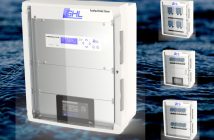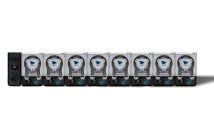Over the Christmas holidays, a thoughtful family member decided to give me a Phosphate Checker from Hanna Instruments. And seeing as how we’re all giddy for new aquarium equipment, we couldn’t pass up doing a product review and demonstration video. For a step-by-step walkthrough for using the Phosphate Checker, along with some observations on its use, continue reading below.
To start using the product, we had to first go over the instructions. While it typically pains us to follow any sort of written guidelines, we felt it a must because chemical reagents are involved and the order of things is crucially important for getting good results.
Once we figured out the game plan for the test, we rinsed the 10ml cuvette with tank water and cleaned it with a cloth to remove water and other particles. After pushing the lone button on the device, which initiates the test sequence, we placed the cuvette filled with aquarium water into the phosphate meter. Initially, the meter reads C1, which indicates that it is zeroing. Once the first stage is complete, the Checker is ready to read the actual test sample. This is indicated by a flashing C2 on the digital readout. So, the powder reagent was added to the cuvette and the solution was gently agitated. The vial was then placed back into the Checker, pushed the button once again, and after just a few seconds the results were given. After all was said and done, we rinsed the vials per the instructions and made sure to dry them thoroughly so that they didn’t become damaged from the water or the reagents.
Here are the observations we made about the Phosphate Checker:
-We tested our aquarium water several times, and adding the powder to the cuvette proved to be the most frustrating point. The packet containing the reagent made it very difficult to add the power to the cuvette. The first three or four times we attempted to test our water, the powder made a big mess and the results seemed too high to be true. We persisted and perfected our method of adding the reagent, and eventually got to the point where we didn’t spill any of the powder during the testing process. Of course, this process was made more difficult due the fact that a camera was standing in between us and the tester.
-The results of the testing is very dependent on how clean the cuvette is and how much of the reagent is dissolved. The reagent doesn’t easily dissolve in the water, and given the fact that the test is timed by an internal timer on the Checker, there is sort of a rush to get things done. This means the data may not be consistent from one test to the other, especially if not all of the reagent is added. A few flakes at the bottom of the cuvette is fine for the test, but we encourage users to try to get it all to dissolve.
While we found this device to be somewhat frustrating at the onset, we still feel it’s a far better solution to testing phosphates than titration test kits. This low range meter can detect phosphates down to the 0.01 ppm level, which is only a dream for titration kits. Our initial frustrations seem to be behind us, especially as we get more comfortable with using the device.




